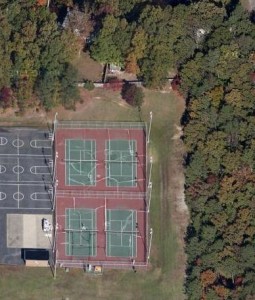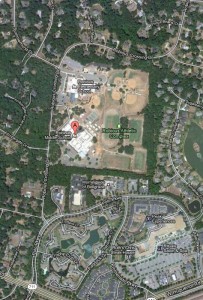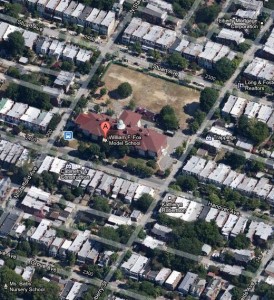by James A. Bacon
Some 114 schools across Virginia have registered for International Walk to School Day with the goal of encouraging children to build awareness of walking as an alternative to the automobile for getting to school.
One of the participating schools is Robious Elementary School in Chesterfield County where parents won funding for a 0.7-mile walkway between heavily traveled Robious Road and the school grounds. “Make kids think about the fact they don’t have to be in a motorized vehicle to get everywhere,” said Bryna Dunn, a PTA member at the school. “There are other ways, fun ways, to get to where you need to be,” she told Jeremy Slayton with the Times-Dispatch.
As someone who walked to school every day for 12 years, I’m a big believer in the practice. Kids benefit from the exercise and the independence they learn from getting somewhere on their own. When a child walks to school, that’s one less car on the road that contributes to congestion, burning gasoline and pollution emissions. It’s a superlative idea.
Alas, I see little evidence that people are drawing the right conclusions. The Robious walkway was built with $500,000 in Safe Routes to School funds, which paid for filling in ditches, removing trees and creating a walkable path. That’s all very nice. But surely there are less expensive and more effective ways to make our neighborhoods more walkable.
Click on the image above to get a close-up satellite view of the Robious school grounds and surrounding neighborhoods. First, you can see that a path (not shown) following Robious Crossing Drive links the school only to neighborhoods to the south. It does nothing to promote walkability for kids living in subdivisions to the north, east or west.
The satellite view shows the insanity of the way Chesterfield County designs its built environment. The school is hermetically sealed off from adjacent neighborhoods by a wooded fringe. There are no paths connecting those neighborhoods to the school, which was designed from its inception to be accessible only by automobile!

Harry F. Byrd Middle School is fenced off from neighboring houses. Whoah, we wouldn't want any of those pesky neighbors using the tennis courts!
I don’t mean to single out Chesterfield here. The example could be replicated endlessly around the state. Indeed, the Harry Flood Byrd Middle School in Henrico has taken the rigid segregation of the school from the surrounding neighborhood a step further. Not only is the school surrounded by a wooded fringe, there is a fence running along the property line just in case some kid got the crazy idea of trying to walk instead of drive to school. (No word on whether the school is participating in the walk-to-school-day event.)
You want children to walk to school? It’s all about the land use, baby. Here’s one more image for your consideration, the William F. Fox Model School in the Fan district of Richmond, when dozens (maybe more) of students walk to school every day without the need for special, once-a-year events. Every street has a sidewalk — no need for Safe Path to School funding. The streets are arrayed in a grid — no need to follow long, circuitous paths to reach school. The speed limit on city streets is 25 mph — no need for your child to dodge fast-moving traffic. And the density is significantly greater — far more houses are situated within walking distance of the school than there are near Robious or Harry Flood Byrd.
Abandoning the urban model of human settlement patterns has contributed to some of the most deleterious trends of the late 20th/early 21st centuries — the decline in childhood exercise and the rise in obesity; the infantalization of children, who are slow to learn independence because they rely upon their parents to go everywhere; and, of course, the excess consumption of gasoline and the excess emission of automobile exhaust that is the unavoidable byproduct. To my mind, the lesson of International Walk to School Day is this: The best way to encourage children walk to work is repairing Virginia’s dysfunctional human settlement patterns!




